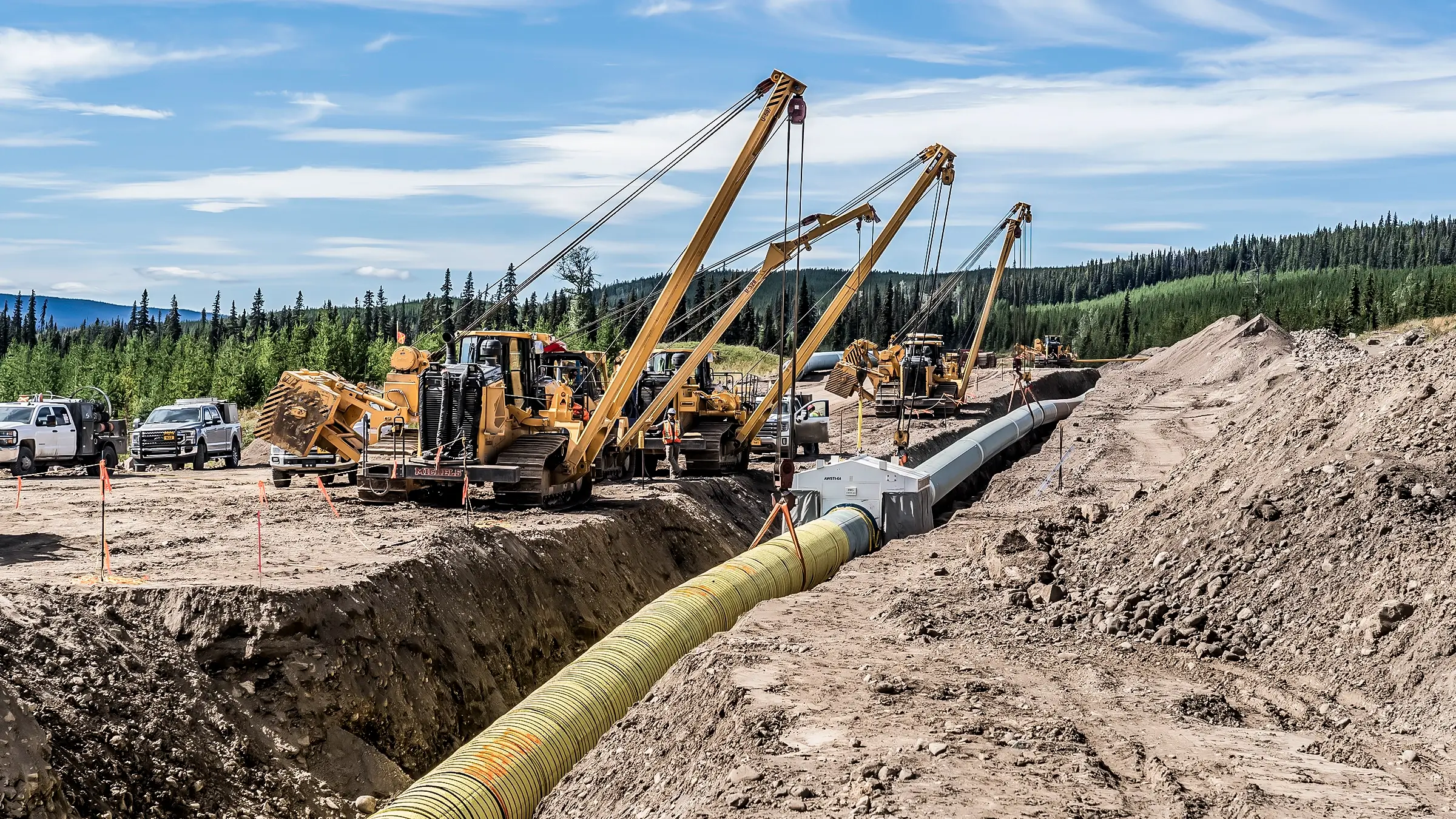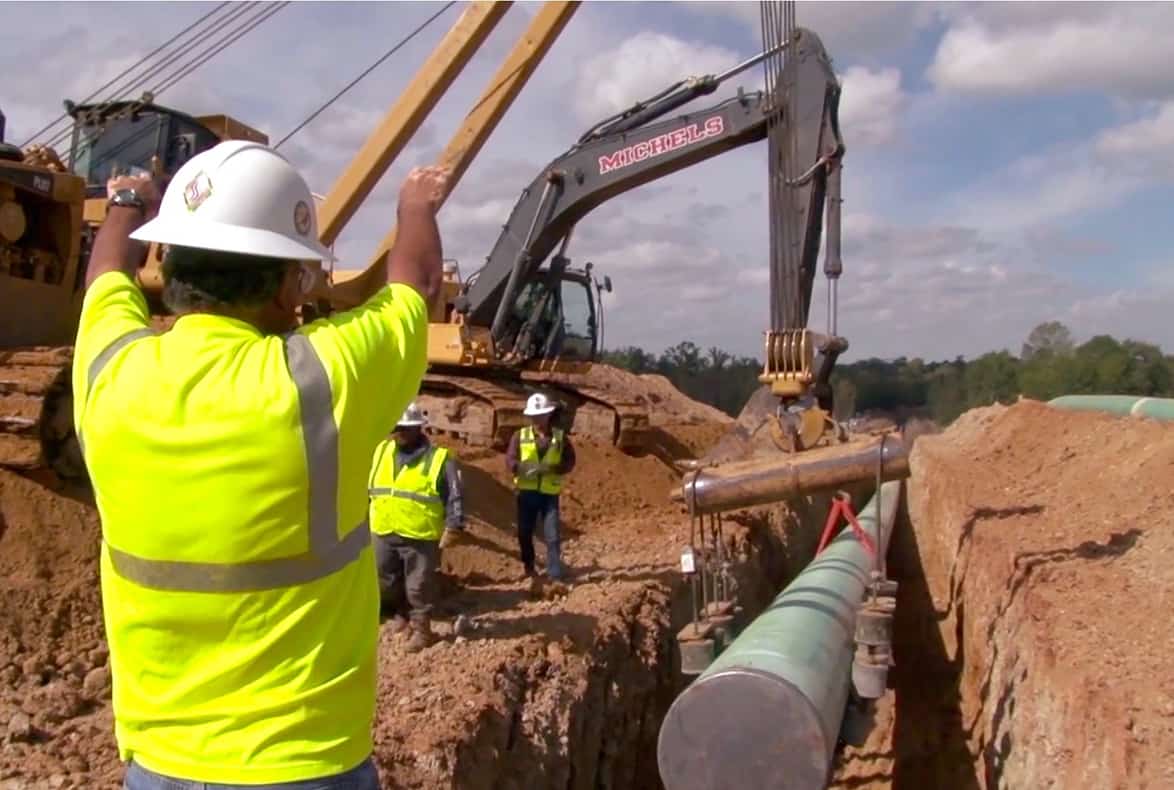Stay Up-To-Date With Local Building Codes Through Creek Pipe Company
The Value of Pipeline Construction: Exploring the Providers Offered in the Market
Pipeline construction is a vital part of modern facilities. It assists in the transport of vital sources like oil, gas, and water. The sector encompasses numerous services, consisting of planning, website preparation, and installment. Each phase calls for precision and adherence to safety and security requirements. As neighborhoods rely on these systems for their resources, recognizing the ins and outs of pipe construction discloses its significance and possible difficulties. What factors influence the success of these projects?
Review of Pipeline Construction Solutions
Pipeline construction solutions include a range of customized tasks developed to assist in the installment of pipes for delivering numerous compounds, consisting of oil, gas, and water. These services normally consist of site preparation, excavation, installation of pipeline sections, and backfilling. Experienced labor and advanced equipment are essential for ensuring each stage is performed with accuracy and safety.Safety methods are vital, as these jobs often involve functioning with harmful products and in difficult atmospheres. Quality control steps determine that the pipelines meet sector requirements and policies. Additionally, the solutions might entail trenchless innovation, which reduces surface disruption.Environmental factors to consider play a substantial function in pipeline construction, calling for evaluations and mitigations to shield surrounding environments. In general, pipe construction services are important for establishing the facilities required for power and water distribution, supporting both financial growth and social requirements.
Preparation and Style in Pipeline Projects
Effective preparation and design are essential parts of effective pipeline tasks, making sure that all aspects are meticulously resolved before construction starts. This phase entails complete feasibility researches that evaluate the technological, economic, and ecological elements affecting the job. Designers and designers team up to produce thorough plans that lay out the pipeline course, products, and construction methods, straightening with regulative needs and market standards.Advanced software and modeling strategies are typically employed to replicate different situations, maximizing the layout for performance and safety and security. Ecological effect assessments are conducted to alleviate potential injury to communities and areas, reflecting a dedication to sustainable practices. Additionally, stakeholder involvement is important, promoting interaction and attending to concerns from impacted celebrations. Eventually, reliable preparation and design established the foundation for a pipeline task, minimizing risks and making sure a structured construction process, ultimately adding to the total success of the procedure.
Website Prep Work and Excavation
Thorough site prep work and excavation are essential actions in the pipe construction procedure. This stage includes a comprehensive evaluation of the land where the pipeline will certainly be mounted. Task groups perform studies to determine soil types, topography, and existing utility lines to guarantee a safe and reliable excavation. Proper website prep work lessens ecological effect and helps with smoother construction operations.Excavation follows, where heavy machinery is employed to remove dirt and rock, developing a trench that fulfills the defined deepness and size for the pipe. This procedure needs to follow safety and security regulations and environmental guidelines to prevent damage to surrounding ecosystems.Additionally, erosion control measures are executed to support the site during and after excavation. Efficient site preparation and excavation add greatly to the total success of pipe projects, laying a solid structure for the succeeding phases of construction.
Pipeline Installation Techniques
Pipeline installation strategies are crucial for the effective implementation of framework tasks. 2 famous techniques include trenchless technology, which minimizes surface area disturbance, and the open-cut excavation procedure, understood for its simple approach. Each strategy uses distinctive advantages and factors to consider depending upon project requirements and ecological elements.
Trenchless Modern Technology Methods
While typical techniques of pipeline installment frequently entail extensive excavation, trenchless innovation approaches offer a much more effective and ecologically pleasant alternative. These ingenious methods, such as straight directional drilling and pipe bursting, reduce surface disruption by permitting the setup of pipelines without comprehensive digging. This not just reduces the environmental effect yet also significantly reduces down on labor and restoration expenses. Trenchless methods facilitate the installment of pipelines in urban areas where standard excavation would certainly be not practical or destructive to existing framework. Additionally, these techniques can accommodate various soil types and conditions, making them versatile services for pipeline construction. Ultimately, trenchless innovation represents a significant innovation in the pipe sector, advertising sustainability and functional performance.

Open-Cut Excavation Refine
Open-cut excavation continues to be a basic strategy in pipe setup, defined by the direct excavation of a trench to lay pipes. This approach includes eliminating soil and various other products to produce a trench of sufficient deepness and size, enabling the placement of pipelines at the needed grade. Open-cut excavation is frequently preferred for its cost-effectiveness and simplicity, especially in locations with secure dirt problems. Nonetheless, it can interfere with surface area tasks and needs careful planning to take care of website traffic and environmental impacts. Safety and security procedures must be implemented to protect employees and close-by infrastructure during the excavation procedure. Generally, while open-cut excavation may not be ideal for all surfaces, it remains a commonly used technique in pipeline construction.
Checking and Quality Guarantee
Evaluating and quality guarantee are essential parts in pipeline construction, making certain that installments satisfy recognized safety and security standards and efficiency needs. Various inspection techniques and techniques are used to assess material top quality and adherence to regulatory compliance. This methodical technique aids recognize potential issues before they rise, guarding the integrity of the pipe system.

Examination Techniques and Techniques
Assessment strategies and methods are crucial components in making certain the integrity and security of pipe construction. Numerous methods, including aesthetic examinations, ultrasonic testing, and radiographic evaluations, are used to spot flaws and validate top quality. Visual assessments permit the recognition of surface abnormalities, while ultrasonic screening uses our website acoustic waves to analyze wall surface density and situate flaws internally. Radiographic evaluations include X-rays or gamma rays to create photos of the pipe's framework, disclosing hidden issues. Furthermore, stress screening is performed to evaluate the pipeline's stability under functional problems. These methods collectively add to a detailed understanding of the pipe's condition, making it possible for prompt upkeep decisions and making certain compliance with industry requirements. Effective evaluation is vital for avoiding failures and advertising lasting operational safety and security.
Safety Requirements Conformity
Making certain conformity with safety requirements is paramount in pipeline construction, as it directly impacts the job's overall high quality and integrity. Complying with recognized guidelines and standards assurances that construction techniques alleviate risks related to pipe installation and operation. Creek Pipe near me. Strenuous screening methods, including non-destructive testing and pressure analyses, are vital in verifying that pipelines can stand up to the operational anxieties they will run into. Quality control actions are likewise important, as they develop a framework for regular monitoring and analysis throughout the construction process. By focusing on safety requirements conformity, companies not just secure employees and the environment yet also boost the stability of the pipe, eventually leading to long-lasting functional success and public count on the framework
Material Top Quality Assessment
Product quality analysis plays a considerable role in the general integrity of pipe construction. This process includes rigorous screening and quality control procedures to ensure that materials fulfill sector requirements and specifications. Various examinations, including tensile stamina, rust resistance, and weld integrity analyses, are carried out to identify any kind of possible weaknesses. A thorough examination not only guarantees the efficiency of the pipeline but likewise improves safety and durability over its life expectancy. Additionally, applying quality assurance methods assists mitigate risks connected with product failings, which can result in expensive repair work and environmental threats. By prioritizing material high quality examination, firms can guarantee compliance with governing requirements while cultivating confidence among stakeholders in the integrity of their pipe systems.
Maintenance and Repair Solutions
Maintenance and repair services play a necessary duty in the longevity and effectiveness of pipe systems. These services encompass routine examinations, troubleshooting, and rehabilitative activities to deal with deterioration, leaks, and other concerns explanation that may arise in time. Competent technicians utilize innovative innovations such as ultrasonic testing and clever pigging to keep an eye on pipeline stability, guaranteeing that any kind of prospective problems are recognized early.Additionally, maintenance programs often consist of scheduled safety nets developed to improve system reliability and lower the chance of unexpected failings. Repair solutions may entail the substitute of broken sections, sealing leaks, or utilizing trenchless innovation for marginal interruption.
Environmental Conformity and Precaution
Pipeline systems not only need recurring maintenance and repair service to operate efficiently however additionally should stick to stringent environmental compliance and safety and security measures. These policies are essential for reducing environmental influence and ensuring public security. Business in the pipe construction sector execute thorough environmental evaluations prior to project initiation, recognizing potential dangers Check This Out to wild animals and ecosystems.Furthermore, adherence to safety and security protocols secures employees and surrounding neighborhoods. This consists of routine training on emergency situation response and spill prevention techniques.To preserve conformity, sectors utilize checking technologies to identify leaks and other abnormalities in real-time. Ecological monitoring strategies are typically established to detail steps for attending to unforeseen problems throughout construction.Ultimately, strict adherence to environmental compliance and precaution not only fulfills legal commitments but likewise fosters sustainable practices within the industry, promoting an equilibrium between infrastructure advancement and environmental stewardship.
Often Asked Concerns
What Profession Opportunities Are Available in Pipeline Construction?
Career opportunities in pipe construction include roles such as task supervisors, engineers, welders, and safety and security examiners. These positions call for varied skills, offering paths for growth in a vital sector of framework advancement and energy distribution.

Exactly How Do Pipeline Projects Effect Local Communities?
Pipeline jobs greatly influence local areas by influencing financial development, supplying work chances, and boosting facilities. They might also elevate concerns regarding ecological effects, land usage, and potential disturbances to community cohesion and all-natural environments.
What Modern technology Is Utilized in Modern Pipeline Construction?
Modern pipe construction utilizes sophisticated technologies such as GIS for mapping, drones for aerial studies, and automated welding systems to enhance effectiveness, safety, and precision, inevitably helping with the reliable transportation of resources throughout numerous surfaces. Creek Pipe roustabout.
How Are Pipeline Construction Costs Estimated?
Pipeline construction costs are estimated with in-depth analyses of materials, labor, equipment, and regulatory demands. Aspects like surface, job size, and environmental considerations likewise significantly affect the general budget plan and monetary planning for construction.
What Are the Greatest Difficulties in Pipeline Construction Projects?
The greatest difficulties in pipeline construction projects include governing conformity, ecological worries, logistical concerns, safeguarding financing, and taking care of labor shortages. Each element can considerably affect timelines and spending plans, making complex the total execution of the job.